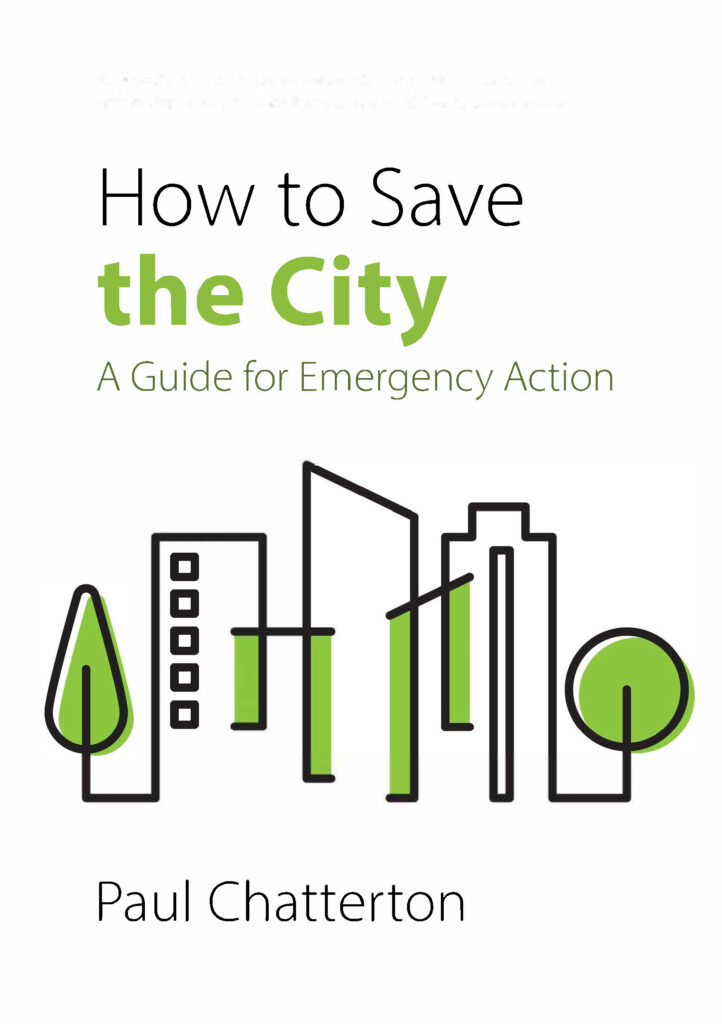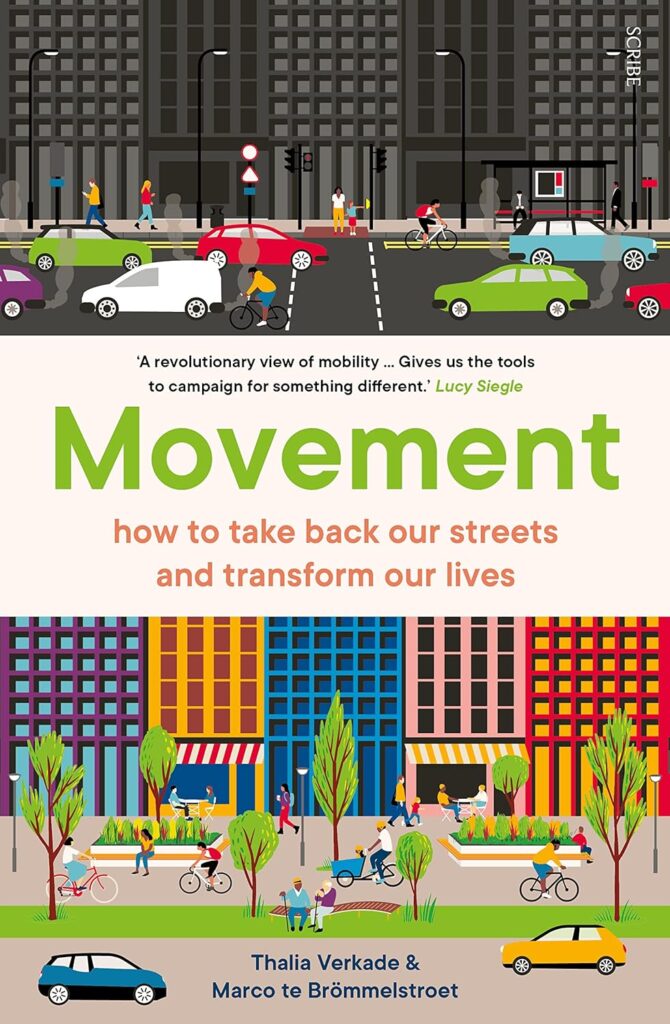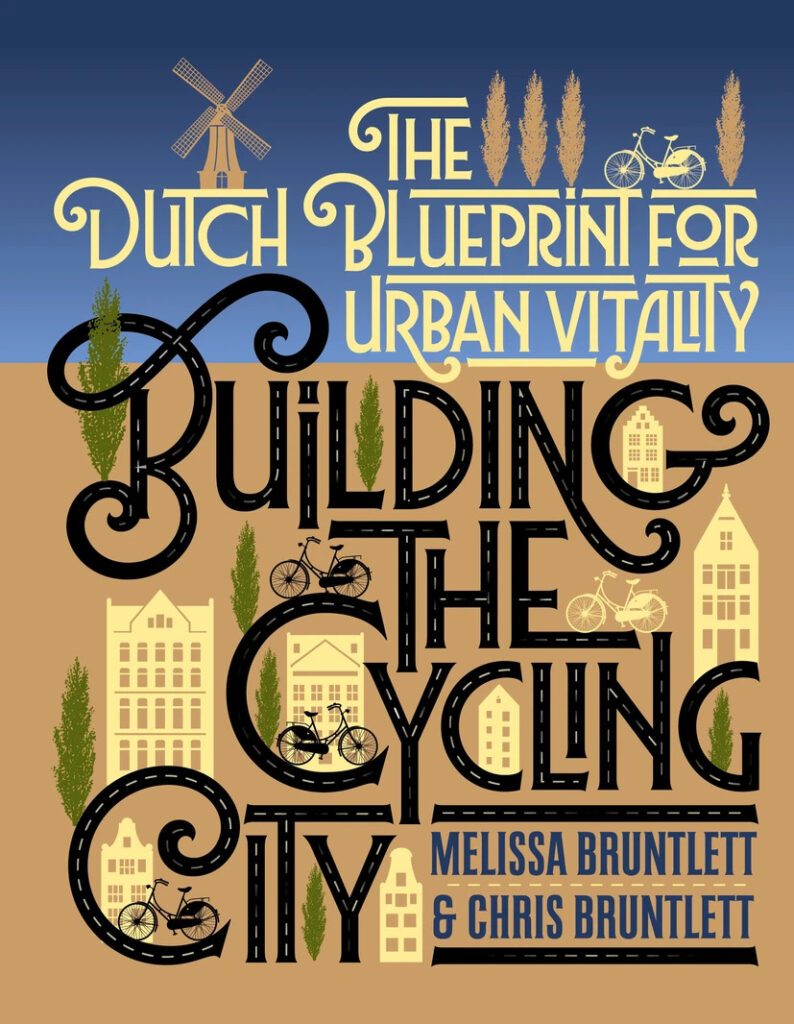
What is it about?
“Streetfight: Handbook for an Urban Revolution” documents the first-person experiences and perspectives of Janette Sadik-Khan during her tenure as commissioner at the New York City Department of Transportation from 2007 to 2013. Sadik-Khan narrates the various challenges faced while implementing the ambitious master plan, called PlaNYC, laid out by Mayor Bloomberg. The plan boldly reallocated street space away from cars and towards several hundred miles of bicycle lanes, bus-only lanes, and dozens of pedestrian plazas with the explicit aim to both improve traffic safety – especially of those walking and bicycling – and to support modes of transport other than private cars. Given the high-profile position that the first author held, readers gain insider insight into the NYC’s surface transportation system and the policies and projects the department launched. The book is read in a story-like fashion, brimming with inspiring before-and-after images, design references, facts and figures to demonstrate what and why streets were changed.

The reader is first introduced to the context around how streets are traditionally organized – around the aim of moving and storing vehicles. This premise is adroitly challenged; the book argues for a drastic change in perspective and to reevaluate how we prioritize space in cities. Invoking the views on urban space of Jane Jacobs, several chapters broadly describe ways to change streets by reorganizing and reallocating space, often using ‘tactical urbanism’ techniques. Pertinent to understanding how space is used, collecting and analyzing on-street observations of people using the space can indicate where changes can be made and can drive important traffic decisions. Specific projects are recounted, including the famous Times Square reorganization, the Citi Bike-share roll out, and the Select Bus Service implementation with bus-only lanes.
Planners and advocates would appreciate Sadik-Khan’s perspective, experience, and drive to change urban transportation systems. We found several mechanisms that Sadik-Khan summons.
First, policy and legal support were strategic tools to fulfill the goals of PlaNYC. A supportive Mayor legitimized the plan, setting unifying goals across public agencies and departments (page 35). Legal teams accelerated legislation enabling projects to achieve desired effects (page 238).
Second, in acutely acknowledging that such fervent political support would not last forever, implementation speed and efficiency were crucial. Completing multiple projects in parallel provided continuous and reliable transport options (page 43). Tactical changes using inexpensive materials (i.e., paint) were often first applied to streets tagged for re-design (page 84). Working quickly has the added benefit of providing post-installation data to support or to change projects to more closely align with their respective goals (page 263).
Third, community outreach was always accompanied by thorough data collection and analysis. For example, during the Citi Bike-share roll-out, the department achieved the most expansive public process in transport history (page 194). Key data points (i.e., on network usage, satisfaction, desire to expand, effects on local economy) addressed criticisms and shortcomings beforehand, informed the general public on what was actually happening, and quickly quelled false statements protesting the changes (page 202). In particular, the authors suggest using economic data as a powerful messaging tools against negative anecdotes (page 252).
With the perspective of a major city’s transportation commissioner we can see the great variety of changes to streets that can be made that improve both safety and efficiency. Though the book refers to itself as a handbook, more specific definitions and recommendations of key metrics would benefit those actively working in urban planning as well as advocates looking to propose street changes themselves. With a growing number of cities articulating similar transportation goals and even employing similar strategies, some readers may desire a greater level of detailed analysis and synthesis of lessons learned. In particular, many types of community outreach were utilized, but the details were lacking on the strategies used, for example, when dealing with strong negative responses. Altering streets requires coordination across many different governmental agencies and groups of people – how did this coordination occur so smoothly, especially given the common mantra that local government lacks the capacity of agile change?
What approach does it take?
There is no doubt that the author’s skills and unwavering strength played large part in bringing the goals set out by PlanNYC to fruition, the broad political support and a more unified city government gives the impression of a relatively fast and smooth execution. As a result, Sadik-Khan encourages the reader to undertake a campaign of eternal vigilance as there are no guarantees preventing the next generation of leaders from reversing the course of a city (page 294). With the COVID-19 pandemic, cities and people across the world are re-imagining their neighborhood streets. Streetfight is poised as a guide to encourage a change in perspective and as a real-world example in a growing catalog of cities implementing these transformations.
Further details
- Streetfight: Handbook for an Urban Revolution, by Janette Sadik-Khan & Seth Solomonow, Penquin Books, 2017, 368 pages, $12 (paperback), ISBN-13 : 978-0143128977



